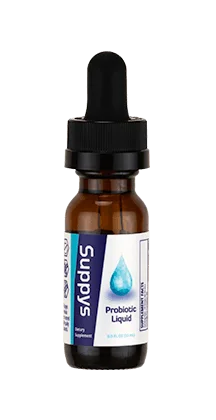PANS/PANDAS
For too long, kids have been dealing with the debilitating effects of PANS/PANDAS without any diagnosis or treatment. But now, there’s hope for young people and their families who are struggling with symptoms like anxiety, OCD, tics and more. By learning more about the signs and symptoms of PANDAS and understanding what causes pediatric autoimmune neuropsychiatric disorders, we can begin to recognize the impact these conditions can have on children and ensure that they get the help they need.

What is PANS/PANDAS?
PANS stands for pediatric autoimmune neuropsychiatric disorder, and is a debilitating childhood condition that can have devastating effects on neurological and behavioral function. The condition is often characterized by sudden onset and a dramatic increase in symptoms, with anxiety, OCD, tics, and other neuropsychiatric symptoms arising after a strep infection or other illness.
Overall, PANS & PANDAS can have a profound impact on a child’s life and mental health, interfering with their ability to function at home, school, and in social situations.
PANS vs. PANDAS
PANS Pediatric Acute-onset Neuropsychiatric Syndrome is a condition that is associated with infections, such as Lyme disease or mycoplasma pneumonia. It involves an abnormal immune response that targets the basal ganglia, an area of the brain responsible for movement, behavior, and other roles such as executive functions and emotions (1).
PANDAS is considered a subset of PANS specifically associated with streptococcal infections.
PANS and PANDAS share many of the same symptoms and are often treated in a similar way.
What causes PANS/PANDAS?
The most current theories suggest that infection, environment, or other factors trigger a misdirected response of the immune system that creates inflammation in the brain. Children affected by PANS may present with symptoms such as OCD, motor tics, anxiety, or severe restrictive eating. These often happen “overnight”, with a very distinct presentation reported by parents.
Strep Infections
- Group A strep bacteria are the most common trigger for PANDAS.
Other Infections
- Viruses (such as flu, chickenpox, or mono/EBV)
- Lyme disease or other tick-borne infections
- Mycoplasma pneumonia (“walking pneumonia”)
Immune System Dysfunction
- An overactive immune response can mistakenly attack healthy brain tissue, leading to sudden changes in mood, behavior, or motor function.
- Environmental Factors
- Exposure to mold, toxins, or chronic inflammation may contribute to flare-ups.
Stress and Physical Strain
- Emotional stress, poor sleep, or even minor illness can worsen symptoms once PANS/PANDAS is present.
Learn about becoming a new patient
Symptoms
Signs and symptoms are usually sudden and severe
Pediatric autoimmune neuropsychiatric disorders affect movement, motor control, emotions, and behavior. This abnormal immune response often presents with a range of symptoms that come on suddenly and reach full intensity within 24-48 hours of appearance.
Children with PANDAS may experience dramatic onset of symptoms such as emotional outbursts, social withdrawal, and sleep disturbances. PANDAS can also lead to problems with cognitive function, such as learning difficulties, memory loss, and trouble with speech or language. Symptom severity varies from child to child.
Some common symptoms include:
- Sudden onset obsessive compulsive symptoms (OCD)
- Oppositional Defiance Disorder (ODD)
- Tics or sudden movements
- Anxiety and/or separation anxiety
- Rapid, exaggerated changes in mood
- Decline in school performance
- Sensory abnormalities (to foods, light, overstimulation, etc.)
- Insomnia and frequent awakenings
- Aggression or violent behavior
- ADHD symptoms
- Loss of previously acquired skills
- Deterioration in academic performance (ADHD-like symptoms, memory changes)
PANS/PANDAS symptoms can appear in as little as a few days after the initial infection, or as long as 4 to 6 months if antibiotics didn’t fully eradicate the bacteria.
What triggers PANS/PANDAS?
It’s believed that these conditions are triggered by an abnormal immune response to an infection. In the case of PANDAS, strep bacteria trigger an autoimmune response that results in the immune system attacking the basal ganglia in the brain.
In the case of PANS, a variety of infections including strep, Lyme disease, and mycoplasma pneumonia can trigger the same abnormal immune response leading to similar symptoms. Other illnesses that may trigger PANS include:
- Lyme disease
- The flu
- Chicken pox
- Epstein Barr (Mono)
- Upper respiratory infections
- Pneumonia
- Strep
Autoimmune response to strep infection
The autoimmune response by the body to an infection is believed to be a result of molecular mimicry. Molecular mimicry is a phenomenon where the body’s immune system mistakes the proteins on the surface of the invading pathogen—in the case of PANDAS, group A streptococcus—for those of the host, the child.
Then, the immune system starts attacking not just the pathogen but also the body’s own healthy tissues. In the case of PANS and PANDAS, the immune system is believed to mistakenly attack the basal ganglia, leading to the onset of neuropsychiatric symptoms.
The inflammation caused by the immune response also interferes with neuronal signaling, affecting the circuitry in the brain.
Ready to do medicine differently?
The Integrative Medicine Approach to PANS/PANDAS
PANS/PANDAS are debilitating neurological conditions that affect children, often appearing suddenly following an infection, particularly strep. Symptoms can include mood swings, tics, OCD, learning difficulties, and sleep disturbances. The conditions occur as a result of an abnormal immune response to the infection that leads to damage to the basal ganglia in the brain. Functional medicine doctors take a holistic approach to diagnose and treat PANS/PANDAS, considering the child’s symptoms, medical history, and environmental factors. They may perform blood tests, brain imaging studies, and use the Cunningham Panel to evaluate the child’s condition and develop an individualized treatment plan. Early diagnosis and treatment are crucial to mitigating the long-term effects of these complex pediatric conditions.
According to the PANDAS Physician Network, to diagnose PANDAS, the patient must fulfill the following criteria:
- Presence of OCD and/or tics, particularly multiple, complex or unusual tics
- Age Requirement (Symptoms of the disorder first become evident between 3 years of age and puberty)
- Acute onset and episodic (relapsing-remitting) course
- Association with Group A Streptococcal (GAS) infection
- Association with Neurological Abnormalities
There are three severity levels for PANDAS: Mild, Moderate and Severe.
Doctors may perform blood tests to look for signs of inflammation or abnormal immune function. High levels of antistreptolysin-O (ASO) or anti-DNase B antibodies are often found in children with PANDAS (5). Doctors may also perform a brain imaging study, such as an MRI, to look for signs of inflammation or damage to the basal ganglia.
Doctors may also use the Cunningham Panel, which tests for antibodies against specific brain proteins that are elevated in children with PANS/PANDAS.
A thorough evaluation of the child’s symptoms and medical history, along with appropriate testing, can help functional medicine doctors diagnose PANS/PANDAS and develop an individualized treatment plan.
Learn more about the hol+ approach
Probiotics restore gut health, which is closely tied to immune function.
 Add to Cart
See All
Add to Cart
See All
Omega-3 Fatty Acids (Fish Oil or Algal Oil) helps promote brain function, focus, and mood stability.
 Add to Cart
See All
Add to Cart
See All
Antioxidants (Vitamin C, Vitamin E, NAC, CoQ10) help protect brain tissue from oxidative stress and support recovery.
 Add to Cart
See All
Add to Cart
See All





